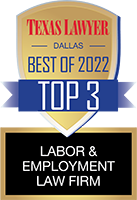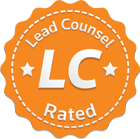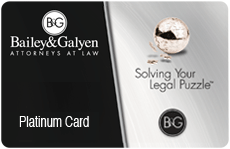 Houston, Texas, provides legal options in a slip-and-fall accident. Attorneys specialize in helping victims of these accidents navigate the legal process and seek compensation for their injuries. In this article, we explore the various aspects of slip-and-fall accidents, related laws in Houston, and how an experienced attorney can assist you in your case.
Houston, Texas, provides legal options in a slip-and-fall accident. Attorneys specialize in helping victims of these accidents navigate the legal process and seek compensation for their injuries. In this article, we explore the various aspects of slip-and-fall accidents, related laws in Houston, and how an experienced attorney can assist you in your case.
What is a slip-and-fall accident?
Slip-and-fall accidents occur on both public and private properties. They are particularly common in high-traffic businesses like grocery stores and restaurants. Additionally, they can happen in public areas such as sidewalks. These incidents often result from hazardous conditions on the premises, such as wet floors, unstable carpeting, or icy walkways.
If you’ve sustained injuries in a slip-and-fall accident in Texas, you may be eligible for compensation covering medical expenses, lost wages, and pain and suffering. For guidance on your legal rights following a slip-and-fall incident, get in touch with a knowledgeable slip-and-fall lawyer.
Common causes of slip-and-fall accidents
A slip-and-fall accident in Houston, Texas, is when someone loses their footing and sustains an injury. These accidents can be attributed to various factors specific to the area:
- Dangerous conditions: Hazardous situations like wet floors, loose carpeting, or icy walkways are common culprits in slip-and-fall accidents in Houston.
- Adverse outdoor conditions: Adverse weather conditions like heavy rain, occasional ice, or unexpected snowfall, along with hidden hazards like potholes, contribute to slip-and-fall accidents, especially in the outdoor areas of Houston.
- Unwarranted substances: Spills of substances like food, oil, or water, or the presence of an uneven surface or loose rug, can significantly increase the likelihood of slip-and-fall incidents in public spaces and businesses in Houston.
- Slick surfaces: A recently cleaned floor that remains slippery can pose a risk for slip-and-fall accidents.
Awareness of these potential hazards is crucial to minimize the risk of such accidents and maintain a safe environment for all individuals in the area.
Common places where slip-and-fall accidents occur
Slip-and-fall accidents can occur in various locations throughout Houston, Texas. These commonly include:
- Public areas: Swimming pools, restrooms, parks, and public sidewalks are common sites of slip-and-fall accidents.
- Entertainment venues: Slip-and-fall accidents are widely reported in clubs, theaters, stadiums, and arenas.
- Restaurants: Spills on floors in restaurants can pose a risk for slip-and-fall accidents.
- Other locations: Additional locations include airports, apartment complexes, bars, nightclubs, construction sites, grocery stores, hotels, resorts, office buildings, and professional complexes, as well as parking lots and garages.
Specific places in Houston where slip-and-fall incidents might occur include the Kemah Boardwalk, Houston Funplex, and the Grand Texas Theme Park. While these places are intended for enjoyment and relaxation, accidents can occur due to uneven or wet pavement, walkways, and stairs. These areas should be approached with caution to prevent accidents and ensure safety.
Slip-and-fall accident injuries
- Fractured bones: In Texas, slip-and-fall accidents often occur on wet or icy surfaces, leading to fractures in the hips, wrists, and ankles. Elderly people are particularly vulnerable to bone fractures due to their increased susceptibility due to advanced age. It’s important to note that legal responsibility isn’t affected by the injured party’s age or health at the time of the incident.
- Broken hips: Slip-and-fall accidents are the primary cause of hip fractures, where the ball part of the hip joint is damaged. Surgery is typically required for treatment, involving the insertion of a metal rod to stabilize the thigh bone. Rehabilitation may be necessary, especially for seniors.
- Soft-tissue injury: Slip-and-fall accidents can result in soft-tissue injury, which can cause chronic pain. These injuries affect muscles, tendons, and ligaments, ranging from mild sprains to severe ligament tears. Even if you feel fine after a slip-and-fall, seek medical attention, as these injuries may not show immediate symptoms.
- Traumatic brain Injury: This can range from minor concussions to severe injuries like skull fractures and brain bleeding. Severe cases can lead to impaired brain function, seizures, and reduced motor control.
- Sprained ankles or wrists: While not severe, these injuries can significantly impact daily activities such as typing, cooking, or dressing. An ankle sprain may also hinder mobility.
- Wounds and Abrasions: Head, arm, and leg wounds are common in slip-and-fall accidents, but minor cases may require only basic treatment.
- Knee damage: Twisting your knee in a slip-and-fall can lead to ligament damage, particularly to the medial lateral ligament and anterior cruciate ligament. These injuries can have long recovery times and may require surgery or knee reconstruction in severe cases.
- Spinal cord or back injury: Slip-and-fall accidents frequently cause back and spinal cord injuries, ranging from fractured vertebrae to herniated discs. In severe cases, paralysis, neurologic deficits, or even death can occur.
- Neck or shoulder injury: Slip-and-fall accidents are a leading cause of shoulder dislocation and can result in collarbone fractures.
What should I do after a slip-and-fall accident?
After experiencing a slip-and-fall accident, it’s crucial to take several immediate steps to protect your well-being and strengthen your potential legal case. Here’s a detailed breakdown of what you should do:
Seek medical attention
The very first priority after a slip-and-fall accident is your health and safety. Even if you believe your injuries are minor, it’s essential to seek prompt medical attention. Some injuries may not manifest symptoms immediately, and a healthcare professional can properly assess your condition. Furthermore, having a medical record of your injuries is crucial for any potential legal action. Seeking immediate medical attention also bolsters the credibility of your case. Delaying treatment may lead the defense to argue that your injuries resulted from a cause unrelated to your slip-and-fall incident.
Document the incident
As soon as it is safe to do so, document the conditions of the accident scene. Take clear photographs or videos of the area where the incident occurred in Houston. Accurately record the scene, taking multiple photos from different angles to capture hazardous conditions and the lack of warnings for subsequent use as evidence.
Determining the cause of the fall is important. For instance, whether you slipped on a store’s wet floor due to the absence of a warning sign, or you tumbled down apartment stairs because the top carpet was improperly secured, understanding the cause simplifies proving the landowners’s negligence. In addition to photographs, collect other pertinent evidence, such as weather reports (for outdoor incidents), previous maintenance requests, and any communication about potential hazards.
Collect witness statements
If there were any witnesses to the accident, approach them and ask if they would be willing to provide a statement. Witness testimonies can be incredibly valuable in corroborating your account of the incident. Encourage them to provide their contact information, as well. This will make it easier for your attorney to contact them if necessary.
Notify the property owner
In the event of a slip-and-fall incident in your apartment building, it is advisable to promptly inform your landlord in writing, furnishing a comprehensive account of the circumstances. If you fall in a store, notify the operator or owner of the store. Keep a record of any communications regarding the incident, such as emails or text messages. Timely reporting is essential for establishing negligence.
Consult an attorney
After taking these initial steps, it’s highly advisable to consult a qualified slip-and-fall attorney in Houston. An experienced attorney will guide you through the legal process, ensuring that your rights are protected and that you have the best chance of securing the compensation you deserve. Your attorney will review the evidence you’ve collected, help you understand your legal rights, and advise you on the next steps in pursuing a claim. They will also handle communication with insurance companies and, if necessary, represent you in court.
Remember, the actions you take immediately after a slip-and-fall accident can significantly impact the outcome of your case. By following these steps, you are setting yourself up for the best chance of a successful legal resolution.
Slip-and-fall statistics
- The U.S. Centers for Disease Control (CDC) reports that more than 8 million individuals get injured every year due to slip-and-fall accidents throughout the United States. Of these, more than 800,000 people require medical attention.
- Slip-and-fall accidents are the most common workplace injury in the United States.
- Unintentional injuries due to falls are the second leading cause of accidental deaths in the country.
- According to the 2020 Texas Department of Insurance Census, 71 out of 469 occupational fatalities in Texas that year were caused due to slips, trips, and falls.
Slip-and-fall accident law in Houston
In Houston, property owners are held responsible for a slip-and-fall incident only if they were aware of the hazard and failed to take reasonable steps to address it. For instance, if the owner knew about a puddle of water but neglected to clean it up or alert customers, they could be liable for any injuries resulting from mishaps.
According to Texas law, property owners are required to exercise reasonable care in maintaining their property for all visitors, with the level of care depending on the visitor’s status, namely invitee, licensee, or trespasser.
- Invitees are individuals who have been given explicit or implicit permission to enter a property for a business purpose. If you are in a restaurant, hotel, or store as a customer, then you are an invitee. Tenants are also invitees vís-a-vís their landlord. Property owners in Texas have a duty to ensure an invitee’s safety. If owners or operators are aware of a dangerous condition but do not take action to rectify it or notify people, they can be held liable for any injuries to an invitee caused by that condition. Business owners also have a duty to inspect their property to learn of any dangerous conditions.
- Licensees are social guests and certain other parties who have the landowner’s permission to enter for their own purposes. Licensees include parties who are on your premises with your permission to conduct work, e.g., a repairman or someone delivering food. The landowner or occupier owes licensees only a duty to warn of any harmful conditions that would not be obvious to the licensee and that pose an undue risk of injury, provided the landowner is aware of such conditions. Owners have no duty to inspect the premises to ensure the safety of licensees.
- Trespassers enter a property without permission. Generally, landowners are not obligated to safeguard trespassers except to ensure they are not intentionally harmed and to not act with gross negligence. However, if a landowner knows a trespasser has entered their property, they have a duty to warn of hazards on the property.
How do you prove negligence in a slip-and-fall case?
To seek compensation for injuries resulting from a slip-and-fall incident on a property due to the owner’s negligence, it’s essential to establish the owner’s/operator’s liability. This involves following several key steps:
Step 1. Demonstrate grounds for duty of care
Under Texas premises liability law, as summarized above, the duty of care owed by a property owner differs depending on whether a person on their property is classified as an invitee, a licensee, or a trespasser. Invitees are entitled to the highest degree of care. Licensees and trespassers are owed a lesser standard of care. This duty extends to areas that visitors can reasonably be expected to access. Collect lease agreements, building codes, and company policy documents to prove that the landlord, owner, leaseholder, employer, or operator was responsible for ensuring safety.
Step 2. Prove breach of duty
Once duty is established, the next step is to demonstrate that the property owner breached their duty of care. Investigate instances when the owner failed to uphold their duty. This may include gathering maintenance records and photographic evidence highlighting neglect, such as broken stairs. Preserve documents showing that the owner failed to take necessary precautions, failed to post warning signs, or neglected their responsibility to maintain a safe environment.
For example, keep letters, emails, or texts showing that you or someone else notified the property owner about a hazard and any follow-up communication or photographs demonstrating that the owner failed to take appropriate action to rectify the hazard. Or use surveillance footage or testimonies from other tenants to demonstrate that the property owner should have been aware of the hazardous condition.
Step 3. Establish links for causation
Use witness statements, expert testimonies, and other evidence to directly link the property owner’s negligence to your injury. Causation involves proving that the breach of duty directly caused the slip-and-fall incident and resulting injuries. It must be shown that if the property owner had fulfilled their duty of care, the accident would not have occurred. This can sometimes be complex, as it requires establishing a clear link between the property owner’s negligence and the victim’s injuries. For instance, if a neglected leaky roof caused a slippery floor leading to your fall, the chain of events should be established.
Step 4. Document injuries and damages
It’s crucial to demonstrate the actual damages or injuries suffered by the victim as a direct result of the slip-and-fall incident. Comprehensive medical records, injury photographs, therapy bills, and expert medical opinions must be compiled. Lost wages and other financial consequences arising from your injuries can be presented.
Consulting with a skilled attorney experienced in slip-and-fall cases can help navigate legal complexities and ensure that each element of negligence is adequately addressed in building a strong case.
How long do I have to file a slip-and-fall accident lawsuit in Houston?
If you have suffered injuries in a slip-and-fall accident in Houston, you may be eligible for compensation covering medical expenses, lost wages, and pain and suffering. It’s important to note that the statute of limitations for slip-and-fall claims in Texas is two years from the date of the accident. This means you have a two-year window to file a claim after the incident occurs.
How much can you expect to recover in damages for a slip-and-fall accident in Houston?
Determining the settlement in slip-and-fall cases can be complex as various factors come into play. In Texas, settlements in such cases vary widely, with amounts ranging from $15,000 to as high as $850,000. Each case is distinct, and the compensation you receive hinges on numerous elements, including the severity of your injuries, how they affect your everyday life, and the level of negligence displayed by the property owner.
Damages to claim for a slip-and-fall accident
Economic damages
Medical expenses
- This category covers the costs associated with medical care and treatment following the injury. It encompasses expenses like ambulance fees, emergency room charges, hospitalizations, surgeries, physician bills, diagnostic tests (such as lab tests, X-rays, CT scans, and magnetic resonance imaging), therapy sessions (physical, occupational, vocational, etc.), as well as expenses for medications and medical supplies.
- It’s crucial to retain detailed records of all medical costs and expenses incurred. Any reasonable and necessary medical expenses can be included in a personal injury case.
Loss of income
If the injuries in the accident prevent you from working, you are entitled to compensation for your loss of income. This can encompass wages, salaries, benefits, commissions, bonuses, and potential decreases in earning potential. It may also include other forms of compensation or opportunities lost due to the injury.
Thorough documentation of these losses enhances the likelihood of receiving full compensation for economic damages.
Other out-of-pocket expenses
- Depending on the specific circumstances of the case, additional economic losses may be included in a claim for damages. These may involve travel costs to and from medical appointments, in-home health care or personal care, long-term medical or personal care, modifications to your home or vehicle necessitated by a disability or impairment, and assistance with household chores.
- Keep meticulous records of bills, invoices, receipts, and proof of payment for these economic losses. Your lawyer will help determine which of these expenses can be included in a settlement demand.
Noneconomic damages
Pain and suffering
- Noneconomic damages, often referred to as “pain and suffering,” pertain to compensation for the physical and emotional distress resulting from the accident and subsequent injuries. This includes compensation for:
- Physical pain and suffering
- Disabilities and permanent impairments
- Scarring and disfigurement
- Emotional distress and mental anguish
- Psychological injuries, such as post-traumatic stress disorder, anxiety, and depression
- Loss of consortium claimed by spouse or parents
- If injuries lead to a significant reduction in your quality of life, such as the inability to engage in hobbies or activities you previously enjoyed, you can seek compensation for this loss.
- Calculating the value of pain and suffering damages is complex, and a standard formula does not exist. Various factors, including the severity and permanence of the injuries, influence assessment.
- Maintaining a journal detailing daily pain levels and the impact of the injury on daily life can assist your personal injury lawyer in maximizing pain and suffering damages.
Punitive damages
- Punitive damages are a relatively uncommon category of damages in personal injury cases. They are intended to serve as a punitive measure for cases involving gross negligence, intentional egregious acts, or actions demonstrating a willful disregard for human safety.
How can a slip-and-fall accident lawyer help with your case?
A slip-and-fall accident lawyer in Houston is crucial to secure the compensation you rightfully deserve. They can help you establish liability, diligently gathering evidence to demonstrate the property owner’s negligence.
Your lawyer evaluates your case carefully. They assess the extent of your injuries, the impact of those injuries on your daily life, and the level of negligence exhibited by the property owner. This evaluation determines the strength of your claim and the potential types of compensation available.
With a solid foundation, the lawyer takes charge of negotiations with the property owner and their insurance provider. Your attorney’s expertise in these discussions ensures you’re not left at a disadvantage. Additionally, if needed, your lawyer can tap into their network of experts to further establish the value of your case, providing critical insights into the extent of your injuries and the lasting effects on your life.
Slip-and-fall accident claim filing costs
Small claims court: For slip-and-fall cases with minor injuries and associated expenses, small claims court is a common avenue for resolution. In this scenario, hiring a lawyer may not be necessary, though it remains an option. The maximum claim in Texas is $20,000 for small claims. Filing fees typically range from $20 to $320; however, if your case is successful, these costs can often be reimbursed.
Severe injury cases: In instances involving severe injuries, seeking legal representation is imperative. Most personal injury lawyers work on a contingency basis, meaning there are no upfront costs. Instead, the lawyer’s fees are calculated as a percentage of the settlement amount and are collected once you have won the case. These fees generally range from 25% to 35% of the settlement amount.
Additional expenses: In addition to attorney fees, other costs associated with pursuing a slip-and-fall case include copies and postage, court filing fees, expert witness fees, deposition and travel costs, and trial preparation expenses. Although your lawyer may request payment for these as they arise, they are typically billed once your case is settled. Your contingency fee agreement should state whether the lawyer or client covers these expenses. It’s crucial to clarify with your lawyer which expenses, if any, you will need to pay for upfront and which, if any, you will need to cover out of pocket in the event you lose at trial or are unable to settle your case. For simple cases, these costs typically range from $800 to $4,400, but they could increase based on the complexity and extent of work required.
Recent Texas case results
Here are two notable case outcomes in Texas. These settlement amounts are significantly higher than typical results for slip-and-fall cases.
- Rebecca v. Aldi
During a routine grocery shopping trip, a customer at an Aldi store in Longview suffered a serious injury after slipping on a wet substance. Despite the incident, Aldi refused to accept responsibility and declined a six-figure settlement. Consequently, the customer’s lawyer brought the case to the Tyler federal district court. The jury’s verdict was unprecedented in Texas business premises liability cases, awarding the victim a total of $1.42 million, with $1,124,000 allocated for physical impairment and pain. Aldi was deemed 100% responsible for the incident. - Aron Black v. Walmart
In 2021, Aron Black, a truck driver, slipped in grease while delivering to a Walmart store in Houston, Texas. This unfortunate event resulted in a ruptured disc in Aron’s spine, along with injuries to the neck and shoulder. These injuries rendered Aron unable to resume work as a trucker and left him dealing with chronic pain. Consequently, Aron filed a lawsuit against Walmart, citing negligence and premises liability. The case proceeded to trial, where a jury granted Aron $5 million in damages. This award is one of the largest payouts in a slip-and-fall case in Texas history. The award breakdown, as outlined in the case file, is as follows: $2 million for economic damages, $1 million for noneconomic damages, and $2 million for physical impairment.
Summary
What is a slip-and-fall accident?
A slip-and-fall accident occurs when a person is injured due to a hazardous condition on someone else’s property.
Common causes of slip-and-fall accidents: Slip-and-fall accidents in Houston, Texas, can be caused by hazardous conditions like wet or slippery floors, unstable carpeting, or uneven pavement or stairs.
Common places where slip-and-fall accidents occur: Slip-and-fall accidents occur in entertainment venues, restaurants, stores, airports, apartment complexes, and construction sites.
Slip-and-fall accident injuries: Injuries from slip-and-fall accidents can range from fractured bones to soft tissue injuries, traumatic brain injuries, and more.
What should you do after a slip-and-fall accident? Seek immediate medical attention, document the conditions, obtain witness statements, and consult a qualified slip-and-fall attorney.
Houston slip-and-fall accident statistics: According to the CDC, annually, over 8 million people are injured in slip-and-fall accidents throughout the United States. Of these, medical attention is necessary for over 800,000. In Texas, 71 out of 469 occupational fatalities in 2020 were due to slips, trips, and falls.
Slip-and-fall accident law in Houston: Texas law mandates that property owners must exercise reasonable care in maintaining their property for all visitors. An owner’s duty of care towards a person on their property depends on the nature of the property and why the person is present. The owner of a store, hotel, or restaurant owes customers a duty to inspect the premises to ensure that they are safe and to remove or warn of any potential hazards. For social guests in a person’s home, the owner has only a duty to warn about dangerous conditions they know of that are not obvious. Owners have a duty of care toward trespassers in only very limited circumstances.
How do you prove negligence in a slip-and-fall case? Proving negligence requires you to demonstrate that the owner had a duty of care; that they breached their duty; that their breach caused an accident; and that you suffered injuries and other damages as a result of the accident.
How long do I have to file a slip-and-fall accident lawsuit in Houston? The statute of limitations for slip-and-fall claims in Houston, Texas, is two years from the date of accident.
How much can you expect to get for a claim in a slip-and-fall accident in Houston? Settlements in slip-and-fall cases in Texas can vary widely, ranging from $15,000 to $850,000. The average settlement amount for slip-and-fall cases in Texas is currently around $31,000. Compensation in each case varies, depending on factors such as the severity of injuries, their impact on daily life, and the level of negligence by the property owner.
Damages to claim for a slip-and-fall accident: Economic damages include medical expenses, loss of income, and other out-of-pocket expenses. Noneconomic damages cover pain and suffering.
How can a slip-and-fall accident lawyer help with your case? A lawyer can help determine liability, evaluate your case, negotiate settlement with property owners and insurance carriers, work with experts to establish the value of your case, and argue your case in court. The lawyer conducts a thorough assessment of your injuries, their impact on your life, and the owner’s level of negligence.
How much does a slip-and-fall accident claim cost in Houston? Small claims court is a common resolution option for slip-and-fall cases involving minor injuries and associated expenses. In Texas, the maximum claim in small claims court is $20,000, with filing fees ranging from $20 to $320. Severe cases require hiring a lawyer on contingency, with fees ranging from 25% to 35% of the settlement or jury award amount. In such cases, there can be additional litigation costs in the range of $800 to $4,400.
Recent case results: Notable Texas cases include Rebecca v. Aldi, resulting in a $1.42 million verdict, and Aron Black v. Walmart, awarding $5 million for a slip-and-fall incident. The awards in these cases are well above average for a slip-and-fall case.
FAQs
What is a slip-and-fall injury?
A slip-and-fall injury is when someone loses their footing and sustains an injury, often due to hazardous conditions on a property.
Who is liable in a slip-and-fall injury?
Property owner liability in Texas varies depending on the status of the visitor. For business invitees–including customers in hotels, shops, and restaurants—liability arises if the property owner knew or should have known of the hazard that caused injury and failed to take reasonable steps to remove or warn of it. However, if the injured party is a social guest in someone’s home, or a worker in the home (like a repairman or food delivery driver), the owner would be liable only if (1) they actually knew of the dangerous condition that caused the injury, (2) the condition was not obvious, and (3) the owner failed to warn about the condition. Property owners are liable to trespassers only if they are injured intentionally or by gross negligence.
What to do after a slip-and-fall accident?
After a slip-and-fall accident in Houston, it's crucial to seek immediate medical attention, document the conditions, obtain witness statements, and preserve any physical evidence related to the accident.
How long do I have to file a slip-and-fall injury lawsuit?
In Texas, the statute of limitations for slip-and-fall claims is two years from the accident, providing a two-year window to file a claim.
How do you prove your slip-and-fall was due to the property owner's negligence?
Proving negligence requires you to demonstrate that the owner had a duty of care (which will differ depending on your status as an invitee or licensee); that the owner breached their duty; that their breach caused an accident; and that you suffered injuries and other damages as a result of the accident.
What are common causes of slip-and-fall accident injuries?
Slip-and-fall accident injuries can result from wet floors, loose floorboards, loose or bulging carpeting, loose mats or rugs, spillage of food or liquids, potholes or cracks, uneven flooring or sidewalks, exposed wiring, or other hazards. Adverse outdoor conditions, such as heavy rain, ice, or snowfall, can also contribute to a slip-and-fall injury.
How much does a slip-and-fall injury claim cost to pursue?
Most personal injury lawyers work on a contingency basis, meaning there are no upfront costs. Their fees, usually 25% to 35% of the settlement, are collected only upon winning the case. (Claims for less severe injuries can be pursued in small claims court, where you may not need to hire a lawyer.)
Additional costs include litigation expenses and expert fees. These costs are typically billed upon settlement. For straightforward cases, these costs range from $800 to $4,400 but can be higher depending on the complexity of your case. Contingency fee agreements should specify whether the lawyer or client covers these expenses in the event the case loses at trial or fails to settle.
How can a slip-and-fall injury lawyer help with your case?
A slip-and-fall injury lawyer can help by determining which party is liable, evaluating the strength of your case, handling settlement negotiations, working with experts to determine the case's value, and presenting your case in court.
What damages can be claimed in a slip-and-fall accident case?
Damages that can be claimed in a slip-and-fall accident case include economic damages (medical expenses, loss of income, other out-of-pocket expenses) and non-economic damages (pain and suffering, loss of enjoyment of life), as well as possibly punitive damages in cases of gross negligence.








